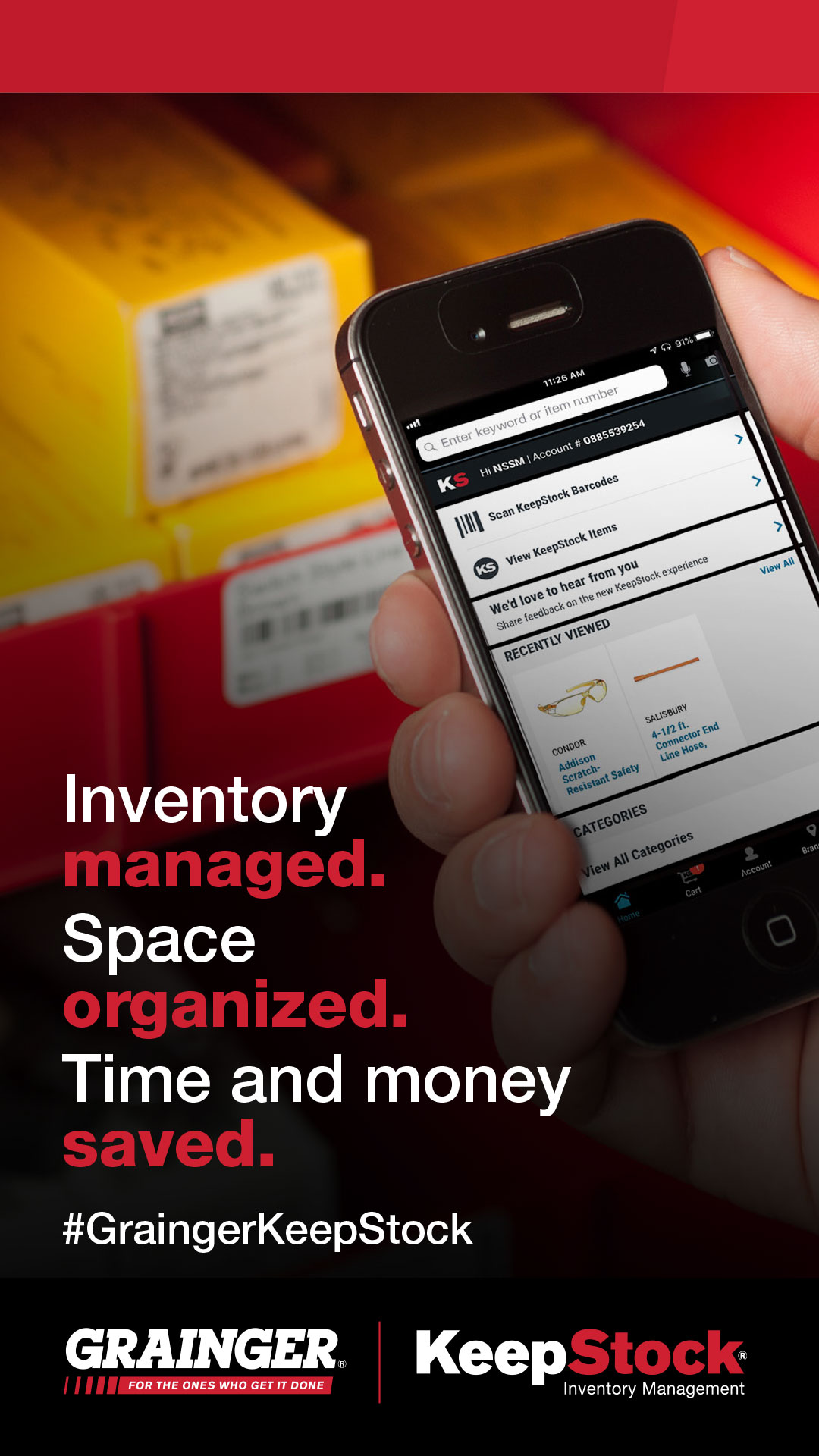

5 Ways to Balance MRO Inventory Management with Emergency Preparedness
By Grainger Editorial Staff 7/5/18
How to balance maintenance, repair, and operations (MRO) inventory and be prepared for any emergency.
Did You Know That:
- Up to 50% of MRO inventory items are inactive for more than 12 months?
- Up to 22% of the time, maintenance employees leave a stockroom without the proper material or quantity?
- Up to 60% of on-hand MRO inventory levels exceed a one-year supply?
Inventory is costly, but MRO stock-outs can be even more expensive—especially when they interrupt your company’s operations. The good news is that with proper inventory management and stock control, you can effectively balance MRO inventory and be prepared for any unexpected emergency.
Here’s How:
Start by factoring in the inventory variability.
Difficult to forecast due to its variability, MRO inventory requires a special touch that goes beyond ordering to avoid stock-outs. A part that’s difficult to source, for example, may suddenly be in high demand during an emergency situation, natural disaster, or unexpected plant shutdown. Factoring in these variabilities when forecasting your MRO needs isn’t easy, but it’s a critical part of achieving “zero downtime” in your operations. Safety stock is one hedge against variability and can be used to address issues like cyclical demand, shutdown-related stock-outs, or the difference between promised MRO product lead times and actual delivery times. Other good tools include automated/computerized forecasting and reordering systems; proper employee training (an inventory tracking system won't perform if those responsible for keeping those records aren’t using it); and frequent cycle counts. "Yearly cycle counts are a costly and ineffective way to reconcile what you think you have with what you actually have. This usually involves shutting down operations for a day or two to take your inventory counts and for all the items you have. More frequent cycle counts on specific areas can be more cost-effective and will keep a regular tab on what you have on hand."
Stop basing MRO inventory forecasts on historical models.
You may not be able to predict the future, but you can improve MRO inventory management and avoid critical stock-outs by utilizing predictive modeling and forecasting. According to the Logistics Bureau, “Historical data for MRO items tends to be inaccurate, given that consumables are prone to movement from place to place within an organization.” For example, an item that looks like it has already been used may actually be stashed away by a field engineer, factory worker, or manager who wants to make sure it’s on hand in case of emergency. These realities can skew historical models and make it difficult to predict future MRO needs. “For best results, software applications should be able to create forecasts based on causal factors, rather than historic data analysis,” Logistics Bureau advises. “Such platforms are becoming more common and affordable as sensor and machine-learning technology improve in sophistication.”
Maintain good levels of “double-duty” inventory.
Look around at your MRO stock and pinpoint key products that can fulfill a “dual” role during regular operations and emergency preparedness situations. These items only take up a small part of inventory and require no additional supply, making them ideal for your plant closets and tool cribs. Consider dual-purpose products like wireless communications systems; water and food provisions and delivery systems; safety and danger markers (e.g., cones, tape, signs, etc.), and battery-powered tools and generators. The benefits of stocking these items and including them in your plan include cost savings, less space needed for inventory, and less training and planning needed to leverage these tools during an emergency.
Optimize your current MRO inventory.
A strategy that involves balancing the amount of working capital that's tied up in inventory with service-level goals across multiple stock-keeping units (SKUs), inventory optimization (IO) ensures that the right amount of inventory is in the right place at the right time. Using advanced modeling techniques and IO software, companies can evaluate multiple inventory strategies, compare the outcomes of those strategies, and then make good decisions regarding their MRO inventory. By eliminating the need for paper-and-pad inventory counts, optimization can help firms prepare for potential emergencies without having to invest in excessive levels of MRO inventory. According to IO software provider IBM®, leveraging technology tools, automated processes, and inventory management best practices to optimize MRO spares and consumables, asset-intensive organizations could see up to a 50 percent reduction in unplanned downtime related parts, up to a 40 percent reduction in inventory costs and up to a 35 percent savings in maintenance budgets.
Outsource your inventory management.
If you’d rather focus on what your company does best—serving its customers with quality products and services—consider outsourcing your MRO inventory management duties to a trusted third party. Grainger KeepStock® Inventory Management, for example, offers a flexible solution that addresses companies’ most critical inventory challenges and concerns. With inventory control that is created to meet a firm’s specific needs, KeepStock keeps facilities running at a maximum level—and for minimum cost and effort—during both normal operations and emergency situations.
Emergency preparedness and regular operations don’t have to work against each other. Key products serve a role in both situations, making it possible to address serious emergencies while helping during day-to-day operations. And while your first instinct may be to stock up on critical items, MRO inventory takes up physical space and is expensive. By following the five strategies outlined in this article, you can effectively balance daily MRO needs with emergency preparation without breaking the bank.
![]()
The information contained in this article is intended for general information purposes only and is based on information available as of the initial date of publication. No representation is made that the information or references are complete or remain current. This article is not a substitute for review of current applicable government regulations, industry standards, or other standards specific to your business and/or activities and should not be construed as legal advice or opinion. Readers with specific questions should refer to the applicable standards or consult with an attorney.







